Family Papilionidae Scientific name Atrophaneura dasarada | Genus Byasa Rank Species | |
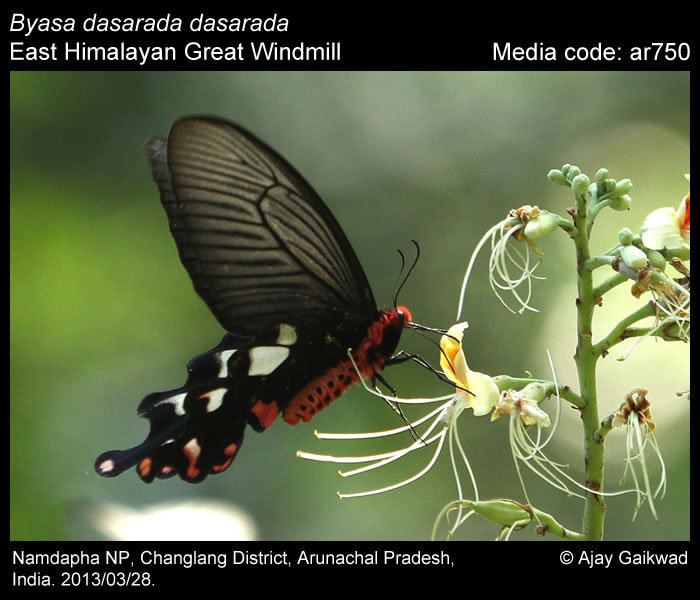 | ||
Similar Atrophaneura aidoneus, Atrophaneura varuna, Byasa plutonius, Byasa crassipes, Byasa latreillei | ||
Byasa dasarada, the great windmill, is a butterfly found in India that belongs to the windmills genus, Byasa, comprising tailed black swallowtail butterflies with white spots and red submarginal crescents.
Contents
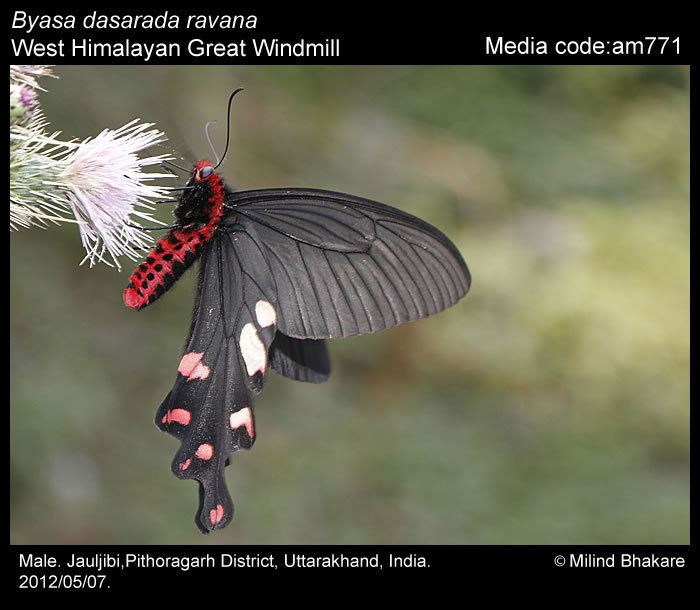
Range and status
Northern India, Nepal, Bhutan, Myanmar, south-eastern China (including Hainan island (Guangdong province)).
The great windmill is not rare or threatened.
Subspecies
There are five subspecies. The following occur in the Indian neighbourhood:
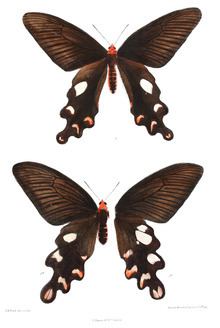
Description
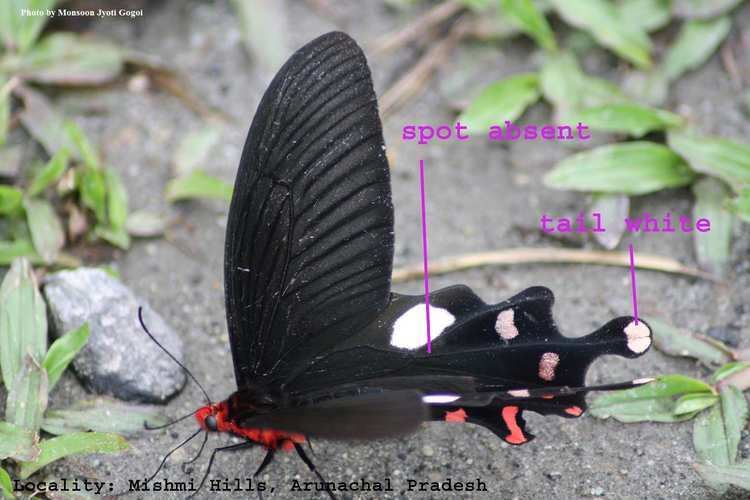
The butterfly is considered to be beautiful in appearance.
Habits
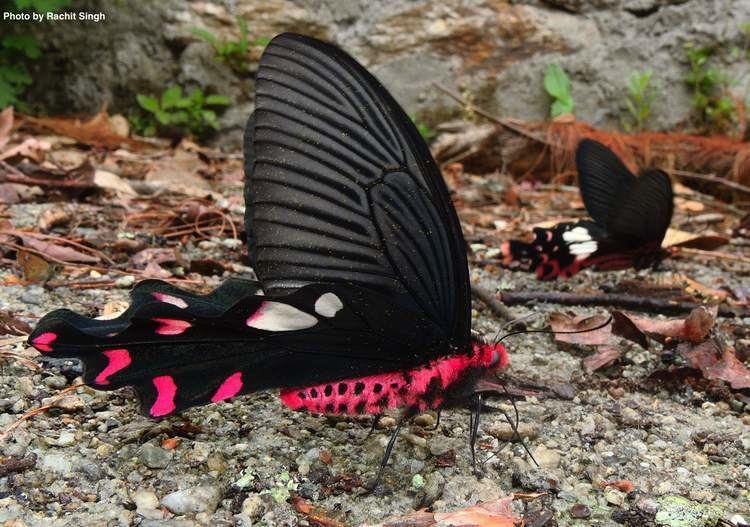
The great windmill is a woodland butterfly. It can often be spotted slowly and gracefully flying across clearings. It flies between 4,000 and 9,000 feet (1,200 and 2,700 m) in the spring and summer. Its habits resemble those of the common windmill.
Egg
Not described.
Larva
The ground colour of the larva varies in shades of grey and has a pattern of black lines. It has an orange osmeterium. The larva has a large number of tubercles arranged in two lateral and two sub-dorsal rows. The third and fourth segments have an additional pair of tubercles. The tubercles all have red tips, except those on the seventh and eighth segments which are almost entirely dirty white and the eleventh segment which has the same colour on just the tips of the tubercles.
Pupa
Pupa is yellow green with blue bands. It has an orange protuberance on its back. It is attached to its support by a black body and anal pad. The pupa emits a squeak when touched.
